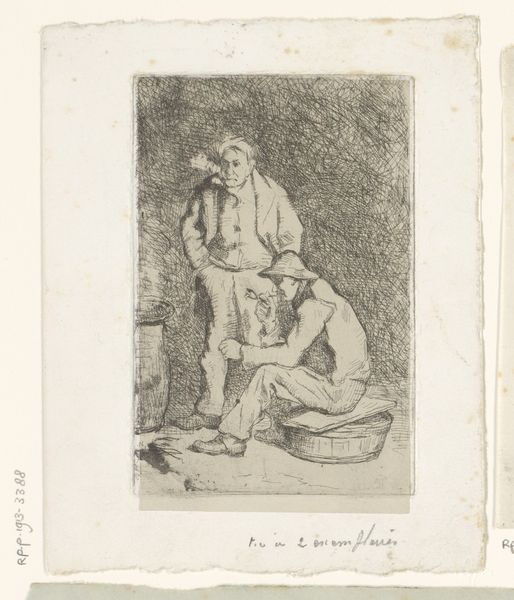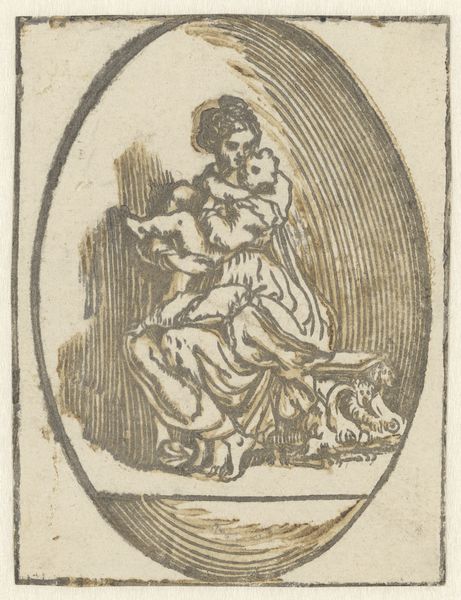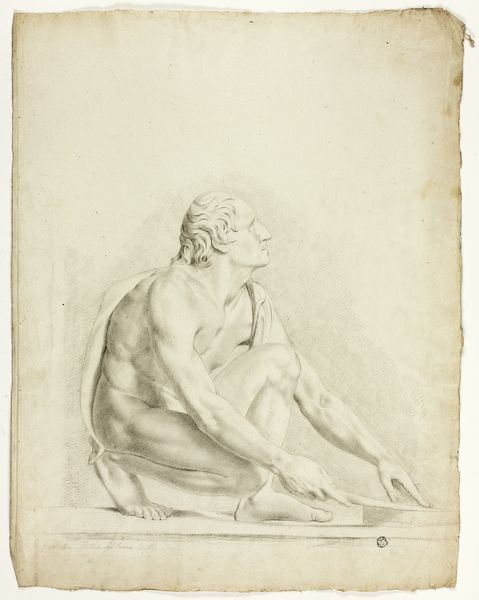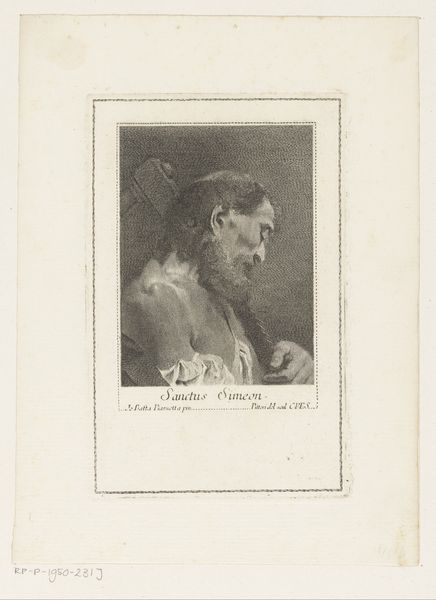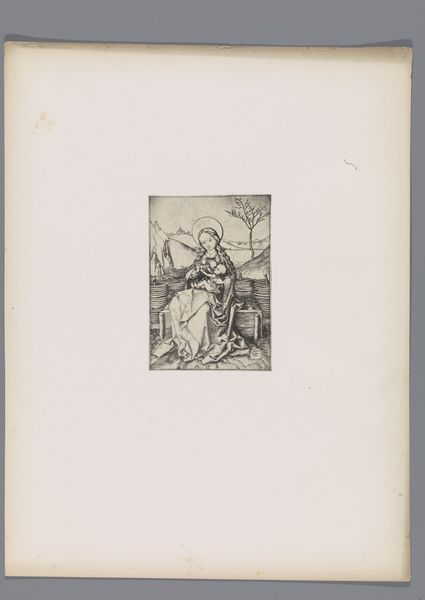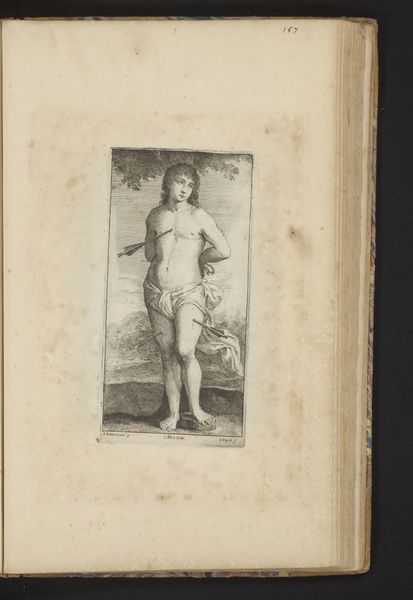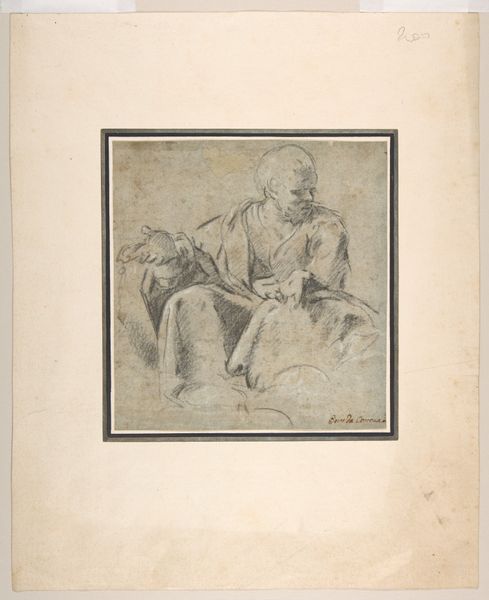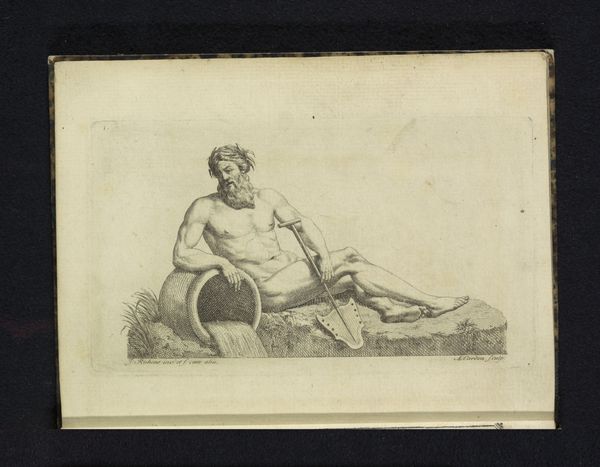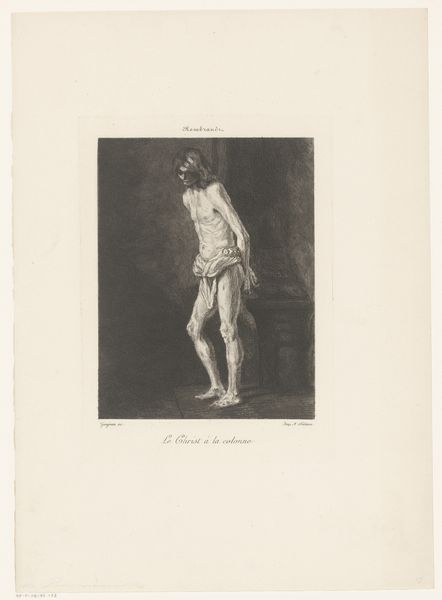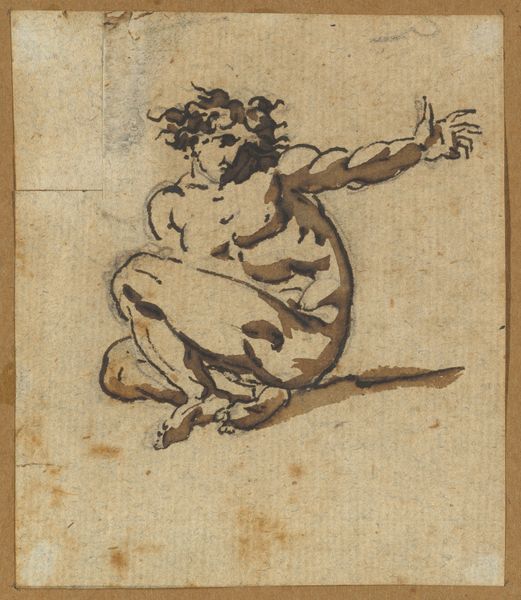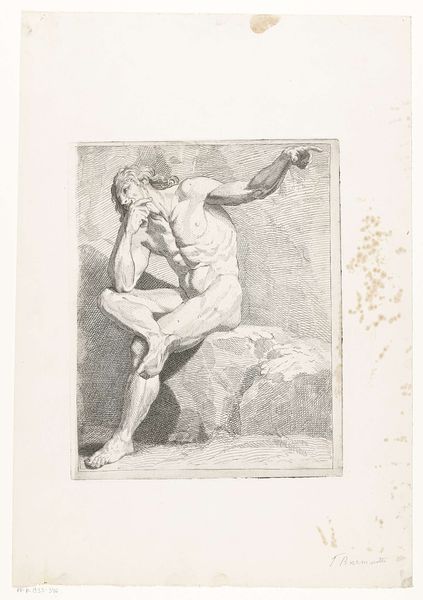
drawing, painting, paper, watercolor
#
portrait
#
drawing
#
painting
#
charcoal drawing
#
figuration
#
paper
#
11_renaissance
#
oil painting
#
watercolor
#
intimism
#
watercolour illustration
#
academic-art
#
nude
#
watercolor
Copyright: Public domain
Curator: Adam Elsheimer’s small-scale painting, "Seated Young Woman," immediately strikes me as melancholic in mood. There’s a somber quality, wouldn’t you agree? Editor: Indeed. What’s immediately compelling is how Elsheimer has utilized paper—it's intriguing how such an intimate piece encourages contemplation on the economic production behind even such supposedly immaterial art forms as watercolour and painting. Curator: From a purely formal standpoint, the limited palette and chiaroscuro effect enhance the introspective mood. The positioning of the figure and the way Elsheimer modeled it, emphasizes her inner state, making the subject archetypal. The texture is what reinforces the aesthetic purpose. Editor: But let’s consider how the ready availability of painting and watercolour impacted artistic practice during Elsheimer's era. What type of labor or material goes unnoticed for a single, tiny watercolour of a figure like this? Such paintings circulated differently, affecting how artists worked, especially through making such scenes more affordable or widespread than previous periods. The dark coloration feels part and parcel of these darker production realities, wouldn’t you agree? Curator: Your point regarding context is relevant. However, within this space, I would highlight the piece's delicate balance, between light and shadow—its form dictates a particular, spiritual reading and experience, almost irrespective of the tangible history. Editor: Spiritual, yes, but isn’t this also related to shifting relations to commodification in the Renaissance, that allowed artists more freedom in technique? Curator: Perhaps. Although, focusing on form is also looking at its original condition: as it would’ve impacted contemporary interpretations—that initial, and continued effect over centuries must come down to its masterful composition. Editor: These formal decisions have to reflect a time where changes to distribution models shaped production processes fundamentally. It reminds us art never stands in some a-historical vacuum. Curator: Regardless, I find myself more moved by the enduring resonance of the painting’s expressive power—it is in effect timeless through design. Editor: And I appreciate it's an intriguing snapshot into shifting material and socioeconomic underpinnings.
Comments
No comments
Be the first to comment and join the conversation on the ultimate creative platform.
